Urban Eats: 5 Edible Plants to Forage in the City
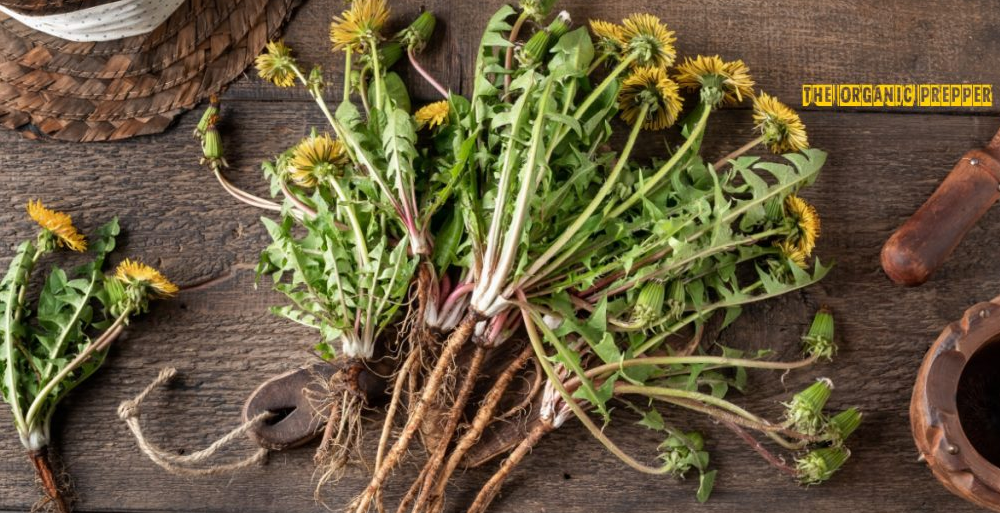 By Lyza Hayn
By Lyza Hayn
Want to forage for wild food? It’s easy when you live in a wild place. However, those dwelling in more domestic areas face challenges when it comes to plant diversity and availability. The good news is that city slickers don’t have to be left out of the fun.
They just have to think outside the box.
While urban landscapes don’t offer the smorgasbord of tasty edibles you’ll find in an actual forest, they can be a veritable treasure trove of vital nutrients — if you know what to look for.
5 Edible Plants to Forage in the City
The following list is by no means exhaustive. It’s simply a jumping-off point featuring five edibles that are plentiful, nutrient-rich, and easy to identify. Once you’ve got these down pat, you can move on to rarer plants and more region-specific wild foods.
1. Dandelion
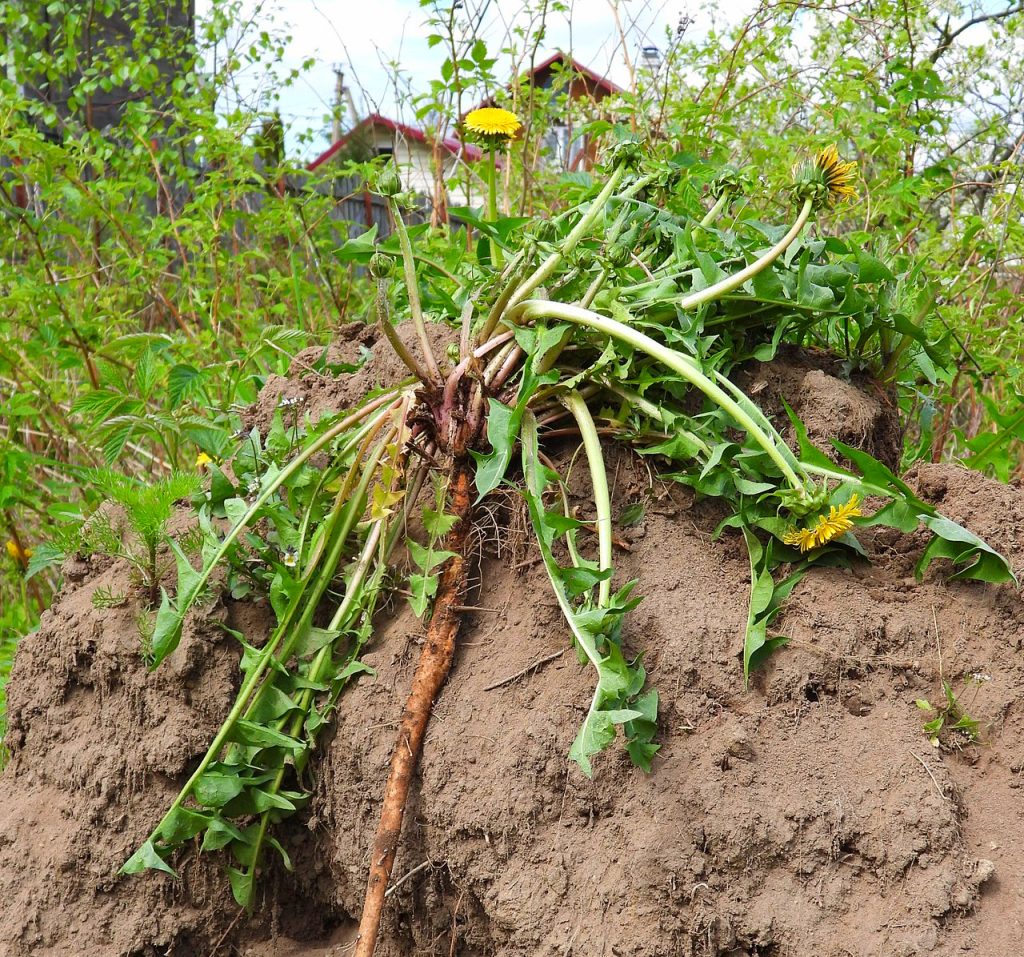
Know in the scientific community as Taraxacum officinale, dandelion is a persistent perennial that grows on every continent except Antarctica. Not only is it a mild antimicrobial agent you can use for personal hygiene when SHTF, but it’s also a delicious and incredibly nutritious urban edible.
When: Dandelion can be found from early spring to late autumn. However, harvesting the greens in late spring or early autumn is best. They are the freshest and most tender before the flowers bloom, but will remain palatable until they disappear for the winter.
Where: Dandelion is incredibly resilient and thrives even in the worst circumstances. You might find this bright flower in your own yard or the common outdoor areas of an apartment complex. It grows in open meadowy areas and is a frequent flyer in parks, roadsides, and ditches. Dandelion will even sprout from between pavers or from the sidewalk!
Natural Blaze is Google-Free — We Need Your Support
Contribute Just $1 Per Month at Patreon to Aid the Cause of Health Freedom
How: Dandelion flowers, roots, and leaves are all good to eat. You must cook the roots—they’re good roasted, steamed, or even fried. The bright yellow blooms add a dash of succulent color to teas, salads, and baked goods. The green leaves are packed with nutrients and present a powerhouse of vitamins A, C, K, and manganese. You can blend them in smoothies, stew them, or eat them raw in salads.
2. Purple Dead Nettle
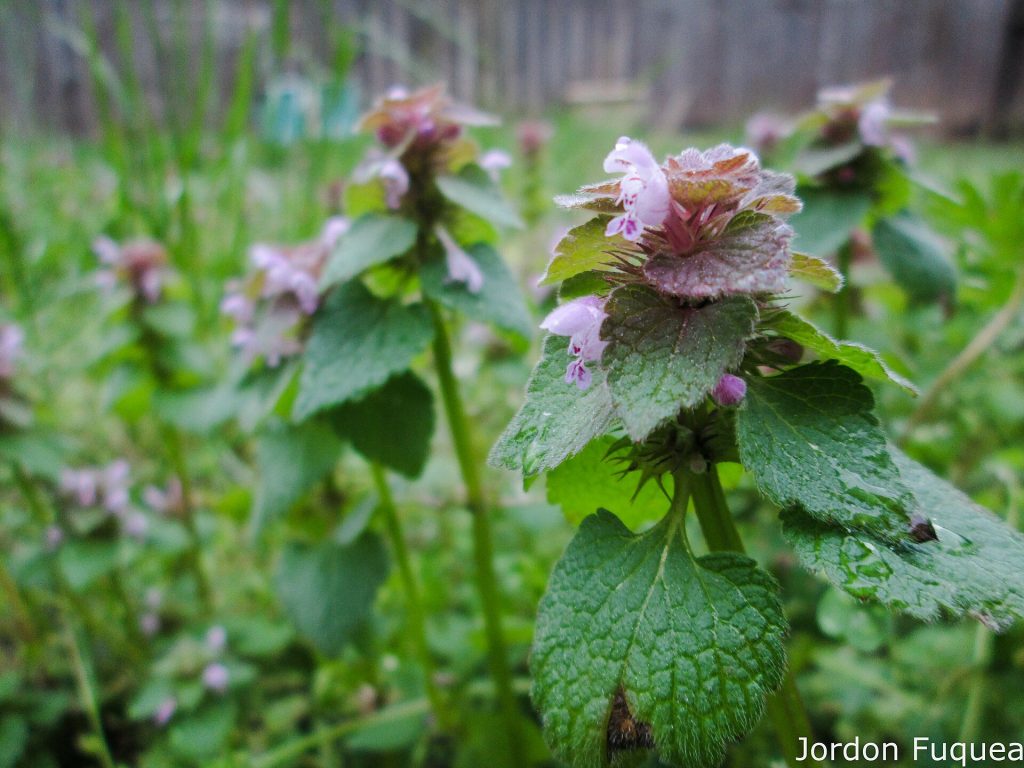
Purple dead nettle, or Lamium purpureum if you’re feeling fancy, is a harbinger of spring and a proud member of the mint family. With tiny yet captivating purple blooms and distinct stacks of serrated triangular leaves, this low-lying plant scores sky-high in health and nutrition.
When: Purple dead nettle is often the first wild edible you can forage once the snow melts. It appears in early springtime and might hold its own for a month or two, but forage while you can. This plant is not competitive and will die off as the season heats up and heartier species come in.
 How to Feed Your Family No Matter What: An Anthology of Self-Reliant Food Production, Acquisition, Preservation, and Preparation
How to Feed Your Family No Matter What: An Anthology of Self-Reliant Food Production, Acquisition, Preservation, and Preparation
Where: Purple dead nettle obliterates my lawn in early spring. It will grow around city parks, cemeteries, yards, or walking trails. Look down seldom-used roadsides to find thick patches, or scour the planters of local businesses to snag a few leaves.
How: Purple dead nettle is packed with antioxidants, vitamins, fiber, and even has a bit of iron. Its purplish leaves and flowering tops make an excellent tea, salad add-in, or smoothie base. You can cook with purple dead nettle just like spinach or kale, or dry it and use it as an earthy herb.
3. Perilla Mint
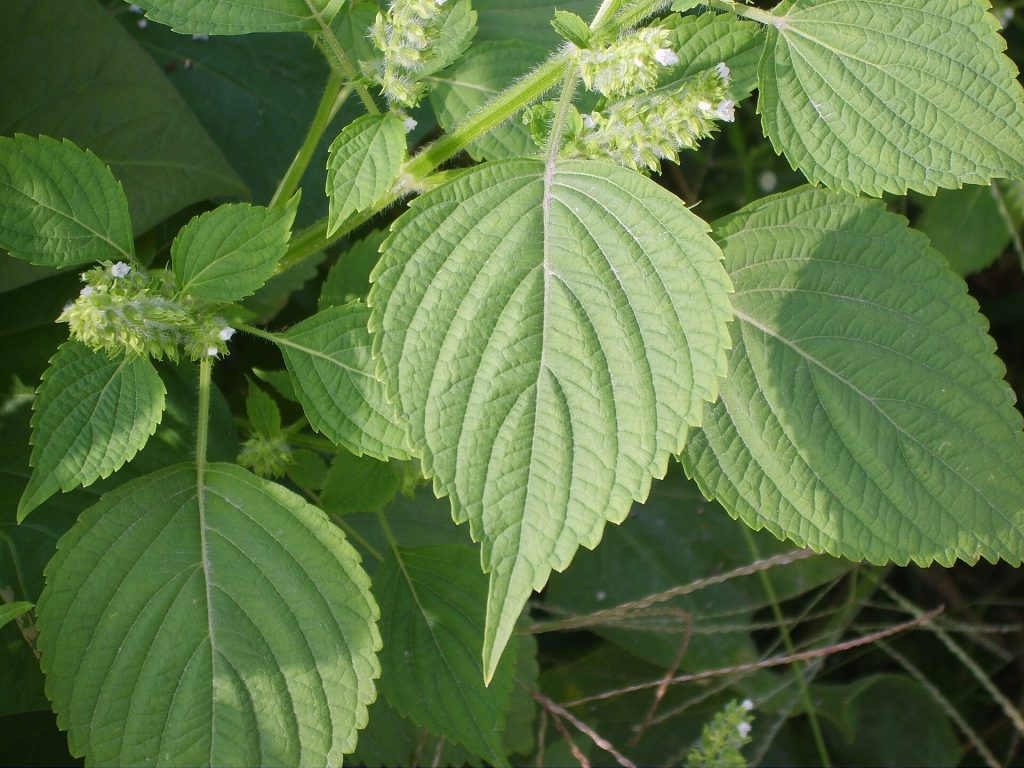
Perilla mint is known as Perilla frutescens in the scientific world. In my neck of the woods, we call it beefsteak plant or Chinese basil. Several varieties are prolific in city settings, making it a perfect plant to sink your teeth into.
When: Perilla pokes its head out when the weather gets warm and persists until the frost begins. I find prime specimens from July to November, though they can appear outside this window depending on where you live.
Where: Perilla is versatile. It loves damp soils and often grows alongside roads in drainage ditches. If you have a greenbelt in your city, search along its creek beds and understory. Perilla will also thrive in other areas with disturbed soil. Searching fields, feedlots, and barns on the outskirts of town may prove fruitful.
How: Perilla has a wonderfully spicy flavor and works well as an herb. Cooking it down dulls some of the heat. If you have an exceptionally large crop, you can cook it and use it like collards or spinach—it makes a slightly more aromatic green. I love making infused vinegar, spice rubs, and perilla soup with the leaves. Its seeds are full of heart-healthy omegas and have a nice flavor when pressed for oil.
Pro Tip: Perilla is great for humans but can make animals sick, so farmers, ranchers, and homeowners hate it. If you see patches growing on private property, it’s often worth asking if you can pick it. If the owner knows what it is, they may be thrilled to get rid of it!
4. Burdock
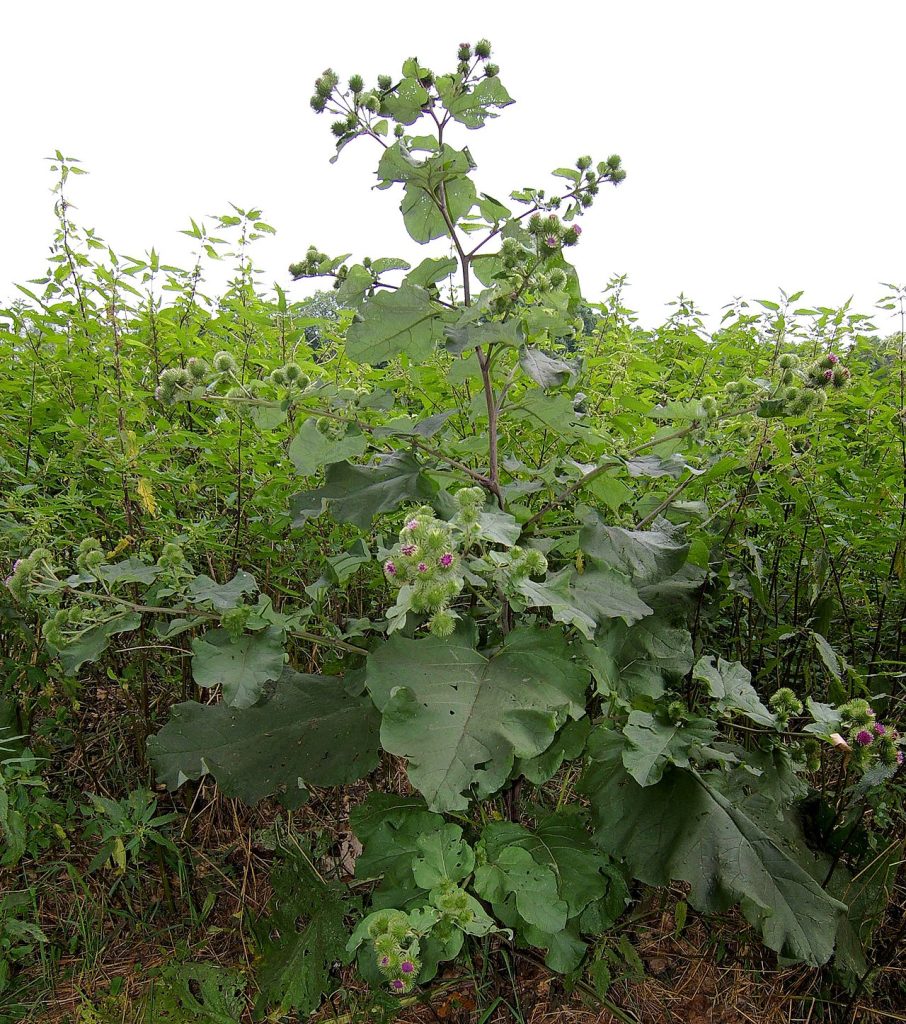
You’ve no doubt seen burdock before. This giant, ridiculous-looking biennial weed is a member of the Arctium family, and dozens of different edible varieties appear worldwide. You’ll recognize it by its spiky purple ball flowers, but it’s important to research which varieties grow in your area and familiarize yourself with how they look.
When: Burdock sprouts in spring and lives for two years. It develops a tasty taproot during the first year but sends up its flower shoot the next. For harvesting, it’s better to get at the plant before it flowers since it becomes bitter afterward. The optimal time for harvesting is the winter of a burdock plant’s first year since the root has grown enough to be worth the effort.
Where: Burdock hangs around trails and forest edges where the seed-spreading animals roam. You’ll find it where the soil has been disturbed on walkways, and it loves to mope around in vacant lots. Check around parks, ditches, and property lines where nobody likes to mow.
How: The best part of burdock is the root. Not only is it tender and flavorful when prepared correctly, but it’s also packed with antioxidants, vitamin B6, and potassium. The leaves are less delicious but are edible when cooked. You can use them as a wrap for cooking other items like you would use grape leaves or corn husks.
5. Cattails
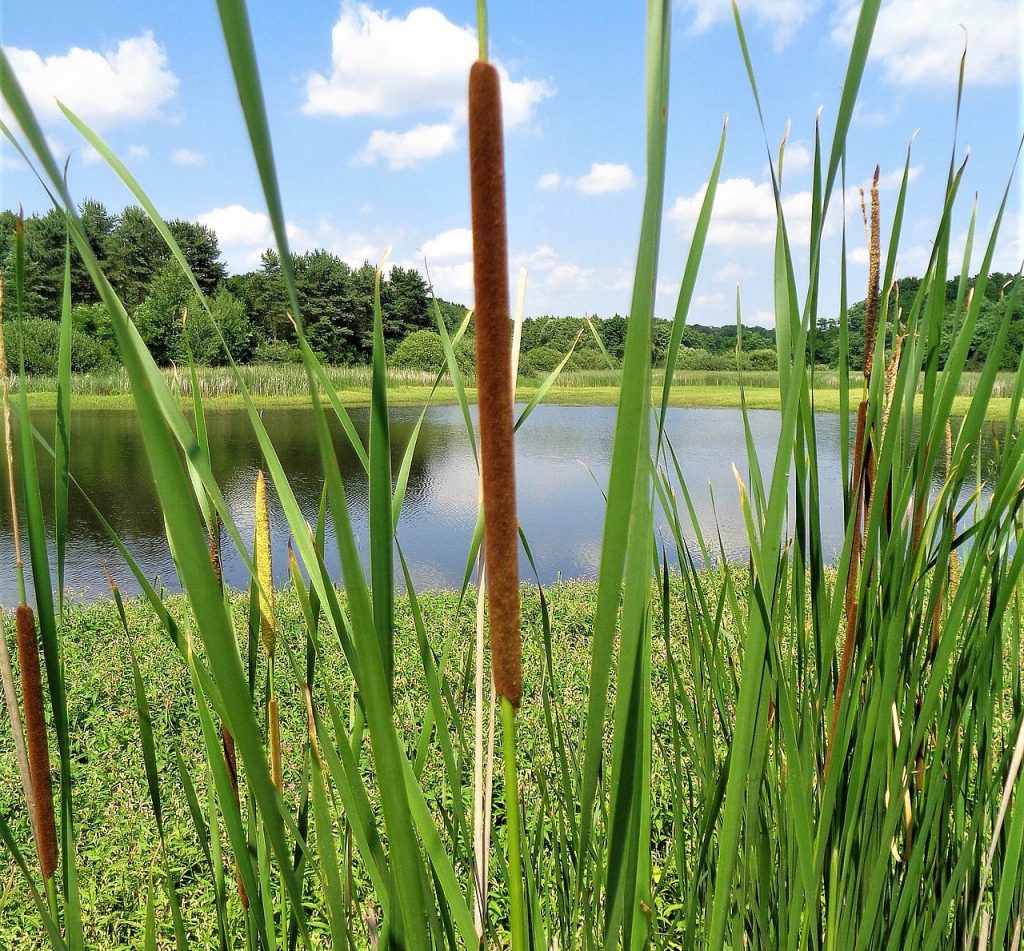
I’ve always called cattails “corndog plants” since the flowering parts are a dead-ringer for deep-fried dough cylinders. They don’t taste anything like corndogs, but they’re way healthier and much cheaper. I make these stately members of the Typha family a regular part of my spring diet every year, and I jar up the leftovers to enjoy throughout winter.
When: Cattails shoot up in spring and grow throughout the summer and into fall. The best part of the plant is the edible shoots, which are best harvested in late spring before the plant flowers. Once it blooms, you can still collect the buds and pollen for food.
Where: This is an aquatic plant. Cattails grow in standing water and thrive even in several inches of mud. You’ve got to get down and dirty to harvest them, but the result is worth the effort. They generally grow in dense clusters, so you can gather a lot in one go. Look in perpetually wet areas around your town, like drainage ditches, canals, and ponds.
How: Most parts of the cattail are edible, but the best part is the young shoot, which can grow over a foot in length. Once you harvest
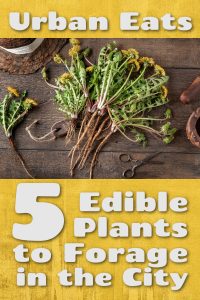 it, remove the husk by peeling it off. You can eat young shoots raw, pickle them, or cook them like onions.
it, remove the husk by peeling it off. You can eat young shoots raw, pickle them, or cook them like onions.
Pro Tip: If you see cattails one year, return to the same spot the following year to harvest tender shoots. You can sometimes find young cattail shoots where last year’s cattail is still visible.
Have you ever foraged for edible plants in the city?
Feeling hungry yet? I can’t blame you! Now that you know some common edibles to find in the city, you can head outside and get foraging no matter where you live.
Have you ever foraged any of the food mentioned here? Do you have any tips for other forages? Are there other wild edibles you recommend that are easy to find anywhere?
Let’s discuss it in the comments section!
About Lyza
Lyza Hayn is an Ozark native forest-dweller and seasoned survival kitchen whiz. Foraging is her passion, and wildcrafting is her (elderberry) jam. She knows how to gather, cook, and preserve hundreds of wild edibles, tincturing and pharmacrafting dozens more. By focusing on alternative food sources and natural remedies, Lyza knows we can all live a more independent lifestyle. Her mission is to help others utilize the world around them to reduce their dependence on established systems and create a more self-reliant future.
You can check out her website at www.letteredbylyza.com or follow her on Instagram @yourmountainhome to see her point of view in photographs.
Source: The Organic Prepper



